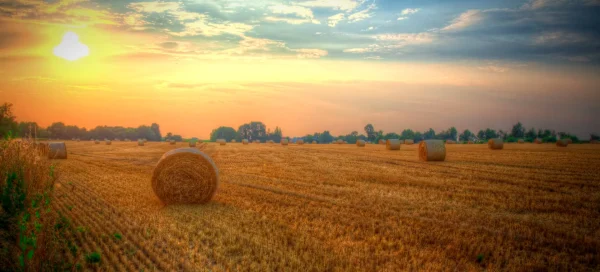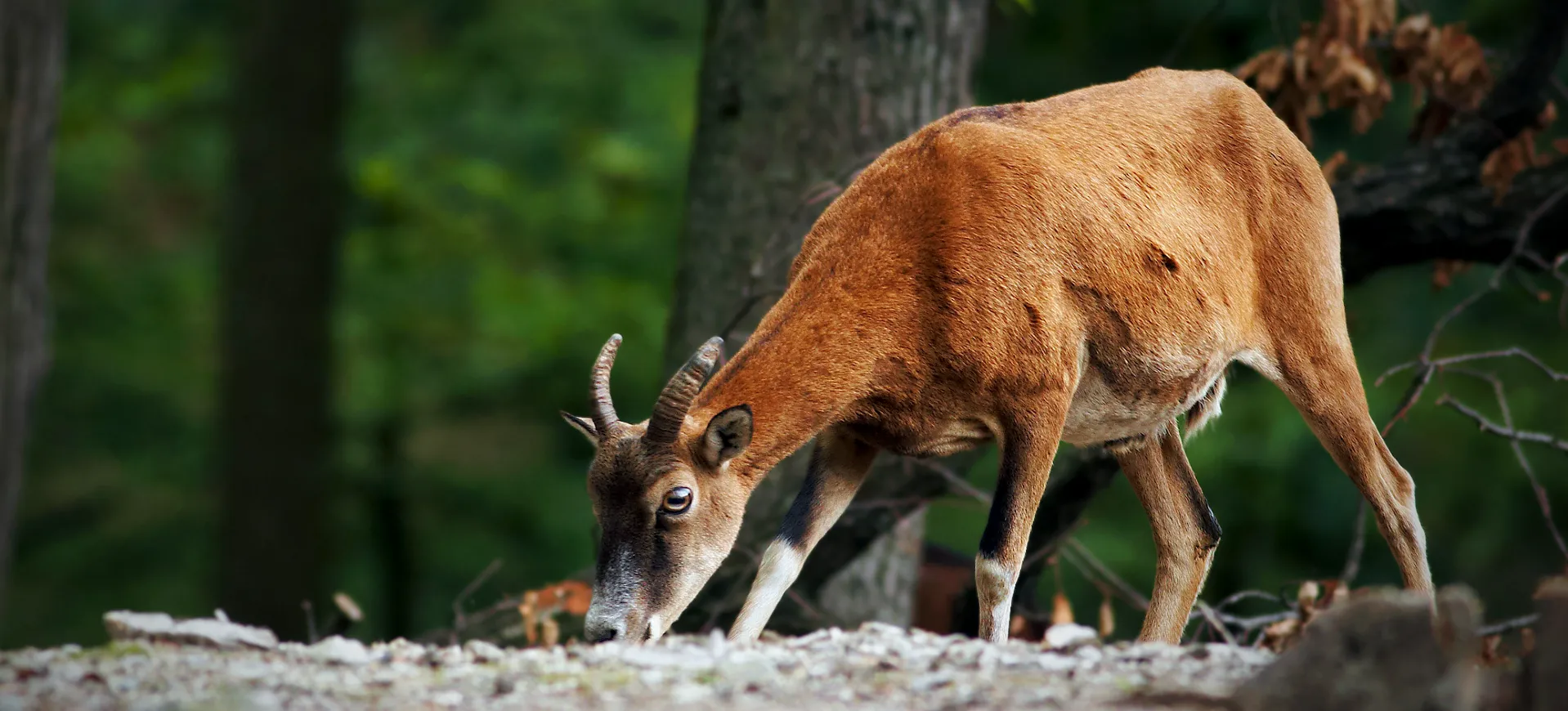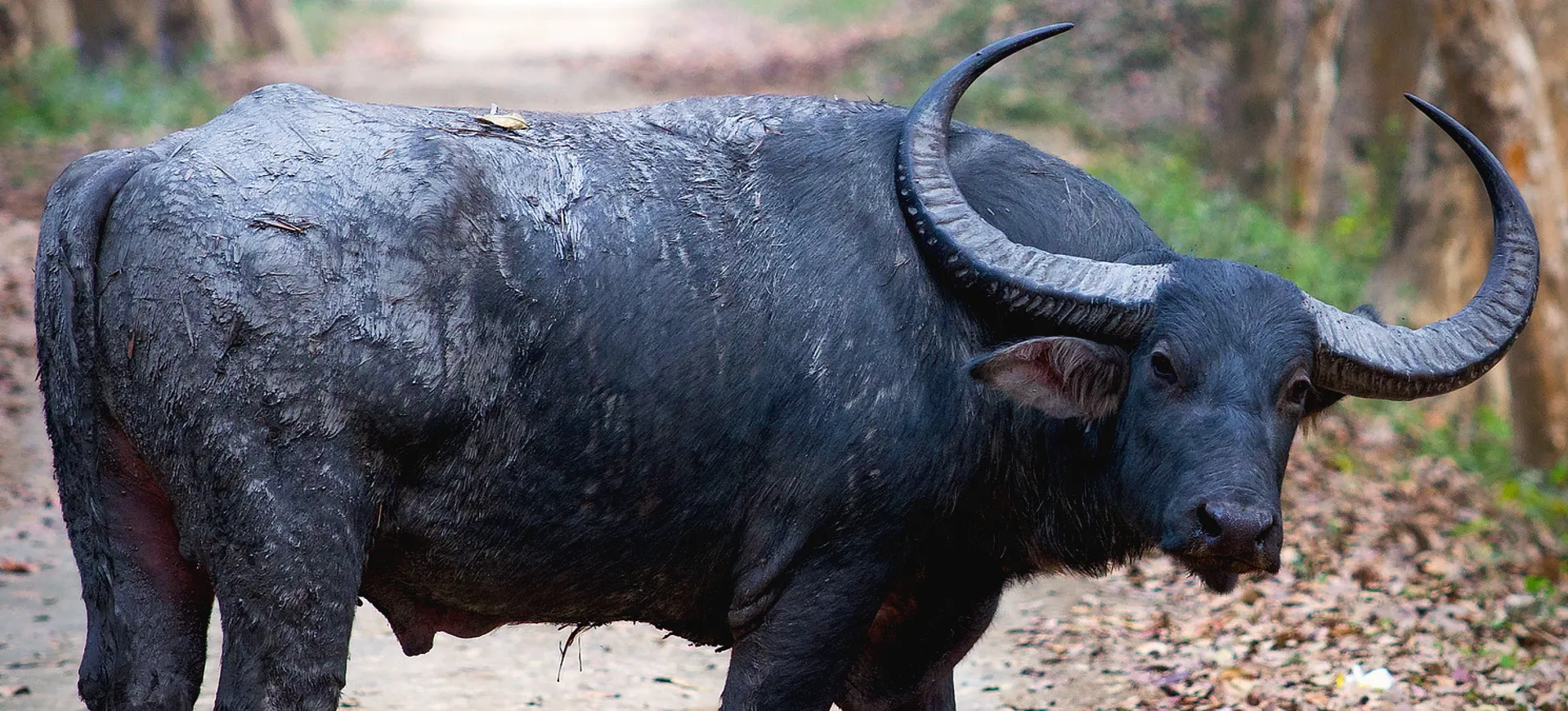Overview
The gaur, also known as the Indian bison, is a large bovine native to South and Southeast Asia. It is the largest extant bovine and is noted for its muscular build and distinctive dorsal ridge. Gaurs are predominantly dark brown or black, with lighter lower legs and a distinctive white stocking appearance. Males are typically larger and more muscular than females, with a more prominent dorsal ridge and a dewlap forming under the throat.
Gaurs are primarily found in evergreen forests but inhabit deciduous forests and grasslands. They are herbivorous, feeding on grasses, leaves, and fruits. Gaurs are known for their shyness and generally avoid human contact, but they can be aggressive if threatened. They live in small herds led by an old adult female and are known for their strong herd instinct, often fiercely defending injured members.
Regarding behavior, gaurs are diurnal, most active in the morning and late afternoon. They are excellent swimmers and often cross rivers and lakes in their habitat. Communication within the herd is facilitated through vocalizations, body language, and scent marking. During the dry season, gaurs migrate to higher elevations for food and water.
Taxonomy
Kingdom
Phylum
Class
Order
Family
Genus
Species
Sub Species
Type
Physical Description:
Gaurs are distinguished by their large size, with a massive body, strong legs, and a hump over their shoulders. Adult males have a more prominent dorsal ridge compared to females. Their coat is short and glossy, typically dark brown or black, with the lower part of the legs being white, giving them a unique ‘stocking’ look. Their heads are large and bony, with sharp, curved horns that can grow up to 45 inches long in males.
Despite their bulky build, gaurs are surprisingly agile and can run at considerable speeds when threatened. Their muscular physique is especially adapted for life in rough, forested terrain. Males are significantly larger than females, with more muscular shoulders and a more imposing appearance. Both sexes have a distinctive ridge on their back, which is more pronounced in males during mating.

Lifespan: Wild: ~30 years || Captivity: ~30 years

Weight: Male: 1500-2200 lbs (680-1000 kg) || Female: 770-1760 lbs (350-800 kg)

Length: Male: 104-138 inches (264-350 cm) || Female: 95-130 inches (240-330 cm)

Height: Male: 68-77 inches (173-195 cm) || Female: 67-72 inches (170-183 cm)

Top Speed: 35 mph (56 km/h)
Characteristic:
Native Habitat:
The natural habitat of the gaur includes tropical and subtropical forests, grasslands, and areas with sufficient water sources. They are primarily found in India and Southeast Asia, including Nepal, Bhutan, Bangladesh, Myanmar, Thailand, Cambodia, Laos, Vietnam, and Malaysia. Gaurs favor hilly, undulating terrain and are often found in the forested areas of these regions.
Gaurs require large tracts of undisturbed forest land for their survival. They depend on water availability and are often found near rivers and water bodies. Habitat fragmentation and loss due to human activities have significantly impacted their distribution. Conservation areas and national parks play a crucial role in providing a haven for these animals.
Climate Zones:
Biogeographical Realms:
Continents:
Diet:
Diet & Feeding Habits:
Gaurs are herbivores, feeding on grasses, leaves, flowers, fruits, and young shoots. Their diet varies seasonally, depending on the availability of food resources in their habitat. In the wet season, they consume more grasses; in the dry season, they rely more on leaves and branches. They have a four-chambered stomach, enabling them to digest tough plant material efficiently.
Gaurs usually feed during the cooler parts of the day, such as early morning and late afternoon. They often visit salt licks to supplement their diet with minerals. Foraging behavior is influenced by food availability and the season, with gaurs covering large distances in search of food. They cause significant crop damage, leading to conflicts with farmers.
Mating Behavior:
Mating Description:
The mating behavior of gaurs is polygynous, with dominant males mating with multiple females. The breeding season typically occurs from December to June, varying slightly depending on the geographical location. During the mating season, males become more territorial and can be seen engaging in displays of strength to attract females and ward off rivals. These displays include loud bellows, horn wrestling, and mock charges.
Females reach sexual maturity at about two to three years, while males mature a bit later, around three to four years. Courtship involves the male following the female, displaying his strength and fitness. After mating, the female undergoes a gestation period of about 275 days, culminating in the birth of a single calf. Calves are born well-developed and can stand and walk shortly after birth.
Reproduction Season:
Birth Type:
Pregnancy Duration:
Female Name:
Male Name:
Baby Name:
Social Structure Description:
Gaurs are social animals, typically found in herds that vary in size from small groups to larger aggregations. These herds are generally matriarchal, led by an experienced adult female. The social structure within the herd is complex, with bonds between females and their offspring playing a significant role. Adult males are generally solitary or form small bachelor groups, joining the herds only during the mating season.
Communication within the herd is vital and includes vocalizations, body language, and scent marking. Social interactions include grooming and play, particularly among calves. Herd members cooperate in protecting the young and in warding off predators. The social structure of Gaur herds contributes to their survival, enabling them to effectively utilize resources and protect themselves from threats.
Groups:
Conservation Status:
Population Trend:
The global population of Gaurs is estimated to be decreasing, primarily due to habitat loss and fragmentation. In many regions, their populations are confined to protected areas, where they are less susceptible to human threats. The largest populations are found in India, but they face challenges due to habitat degradation and poaching.
Gaurs adapt to fragmented habitats in some areas, using agricultural lands and plantations as part of their range. However, this often leads to human-wildlife conflicts, particularly in regions where their natural habitat overlaps with farmlands. Conservation efforts are focused on protecting their habitats and mitigating conflicts with humans. The protection of large contiguous areas of forest is crucial for their long-term survival.
Population Threats:
The primary threats to Gaur populations include habitat loss due to deforestation and land conversion for agriculture and development. Human-wildlife conflict is another significant threat, as Gaurs sometimes venture into agricultural areas, leading to conflicts with farmers. Poaching for meat and body parts, although illegal, is still a concern in some areas.
Diseases transmitted from domestic cattle are also a threat to wild Gaur populations. Habitat fragmentation isolates populations, reducing genetic diversity and increasing vulnerability to disease outbreaks. Climate change and its impact on their habitat and food resources are emerging threats that could further impact their populations in the future.
Conservation Efforts:
Conservation efforts for the Gaur focus on habitat protection and management, anti-poaching measures, and community involvement. Many Gaurs reside in protected areas that benefit from conservation measures such as anti-poaching patrols and habitat management. Efforts are also made to maintain and restore corridors that connect different populations, enabling genetic exchange and movement.
Community-based conservation initiatives are crucial, especially in areas where human-Gaur conflicts occur. These include compensation schemes for crop damage and community education programs to reduce conflicts. Research on Gaur ecology and behavior is ongoing, contributing to better management and conservation strategies. International cooperation is essential for the species’ long-term survival, especially in transboundary conservation areas.
Additional Resources:
Fun Facts
- Gaurs are the largest species of wild cattle in the world.
- Despite their size, Gaurs are excellent swimmers.
- Young Gaurs are reddish-brown, changing to dark brown or black as they mature.
- Gaurs can consume up to 150 pounds (68 kilograms) of daily food.
- Gaurs are known to form a protective circle around the calves when threatened.
- They have a lifespan of up to 30 years in the wild.
- Gaurs have a keen sense of hearing and smell, which helps them detect predators.
- In Hinduism, the Gaur is considered sacred and is often depicted in art and literature.
- Gaurs are capable of jumping over obstacles up to six feet high.
- ‘Gaur’ is derived from the Hindi word ‘gaur,’ meaning ‘fair’ or ‘pale,’ referring to their light-colored legs.
















































































